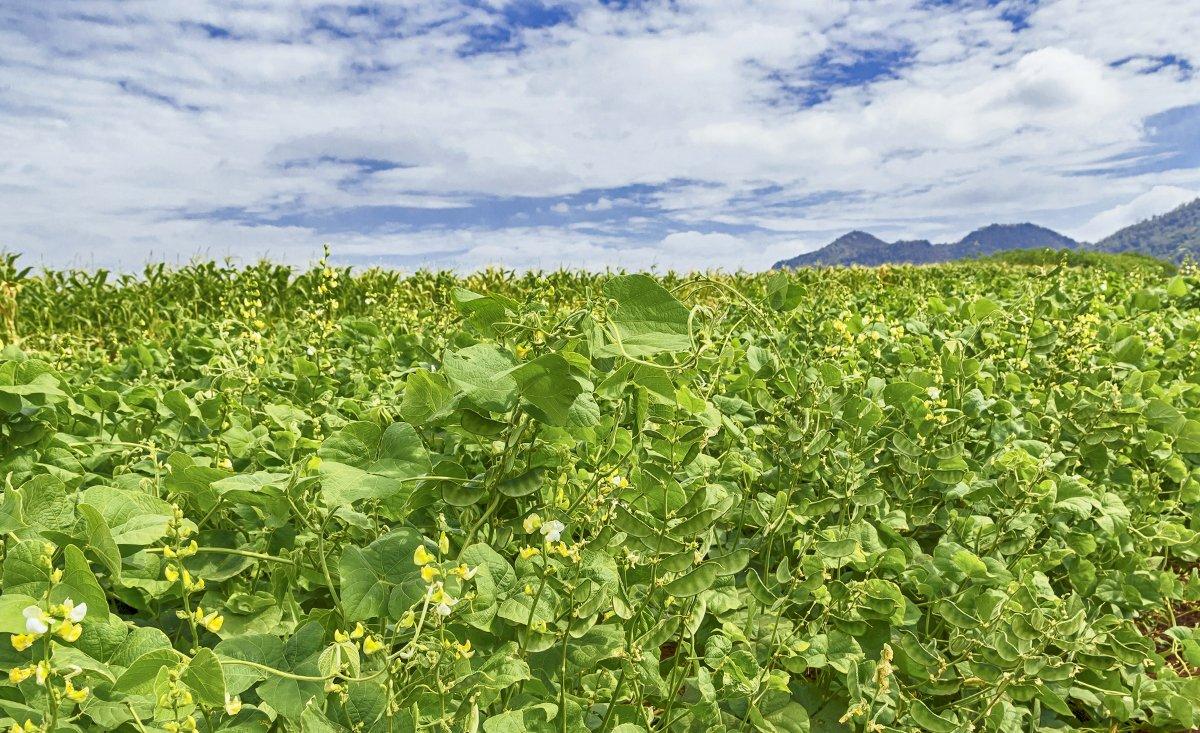Lablab is one of the best early season food sources available for deer. It’s a warm-season annual legume like soybeans and different varieties of peas. It contains approximately 25 to 30 percent protein and provides many nutrients necessary for a healthy deer diet.
At its peak, lablab can produce as much as 6,000 to 8,000 pounds of dry forage per acre throughout the year. Due to its attractiveness, we recommended food plot sizes be at least 1 acre to prevent overgrazing.
I’ve personally planted lablab on numerous occasions and experienced great results with the germination, growth and consumption by the deer. It seems to be a favorite among whitetails and will certainly help draw deer in during the early part of bow season and on into fall.
How to Plant
Start by testing the soil. It should have at least a 6.0 pH for maximum growth. When applying fertilizer, focus on potassium and phosphorus. Remember that legumes produce their own nitrogen, so putting nitrogen into the soil before planting is not quite as important as with other plant species.
Gear Review: Yamaha Introduces 2018 Kodiak 450 in Realtree
Once the soil is tested, spray for weeds to kill competing plant species. Allow at least a week or more for weeds to die. Then break ground and disk the soil completely until you have a nice, flat seed bed.
If drilling, plant at a rate of about 15 to 20 pounds per acre. If broadcasting, increase the rate to about 25 to 30 pounds per acre. Make sure you cover the seed with dirt well after planting.
When to Plant
Timing is important when planting lablab. In the North, depending on temperature and water levels, begin planting the last two weeks of May and continue planting into mid-June. In the South, you may begin planting sooner, say in early April, and can continue planting into late June or even July, conditions depending.
Overall, if you’re familiar with soybeans, the timing is much the same. Keep in mind the necessary time for the plant to reach maturity and anticipate when that first frost will hit. Once that happens, the plant will cease to grow and will likely die.
Where to Plant
This plant species is known for doing well throughout most of the country. Unlike other legumes, lablab does not tolerate wet soil conditions as well. In contrast, it does very well under dry conditions. Furthermore, it does tolerate both acidic and inferior soil. So overall, it has its ups and downs.
When planting, take into account other nearby food sources. If you don’t have the means to fence deer out of the food plot while the lablab plants grow to maturity, it will help to ensure alternative food sources are in close proximity. If there aren’t any, deer will likely overgraze the lablab and strip plants down to the stem before they can reach maturity.
Don’t Miss: 6 Food Plots on a Budget
Are you a hunter wanting to learn how to accomplish your goals? Check out our stories, videos and hard-hitting how-to’s on food plots and land management.
Follow us on Facebook.













































